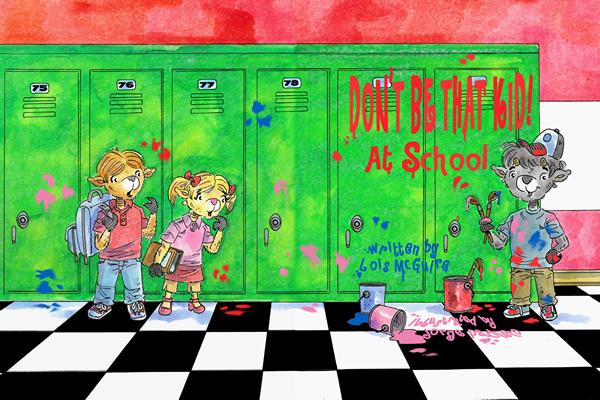- NJASA
- Retiree Corner December 2016

-
Don't Be That KID! At School
Many prior Retirees’ Corner articles stressed the importance of having a plan. I retired in 2002 and moved to Florida. Although I had one and was busy and engaged, I still hadn’t written that children’s book on character education that I always wanted to accomplish. Quite frankly, I didn’t know where to begin and what to do once it was written. Finally, at a family dinner a few years ago, one of the younger kids was fooling around at the table and an older one said to him, “Don’t Be That KID!” From that comment, a book was born.
 Don’t Be That KID! At School is about a little goat who misbehaves at school but ultimately learns his lesson. Each scene provides an opportunity to discuss character building values, such as honesty, kindness, consideration, responsibility and respect. I also wrote a Don’t Be That KID! At School Resource Guide which accompanies the book but can be used independently. It is filled with meaningful activities for children in grades K – 5 for teachers and parents to use to reinforce proper behavior and character education principles.
Don’t Be That KID! At School is about a little goat who misbehaves at school but ultimately learns his lesson. Each scene provides an opportunity to discuss character building values, such as honesty, kindness, consideration, responsibility and respect. I also wrote a Don’t Be That KID! At School Resource Guide which accompanies the book but can be used independently. It is filled with meaningful activities for children in grades K – 5 for teachers and parents to use to reinforce proper behavior and character education principles.I’d like to share with you some basic guidelines to writing and self-publishing an illustrated children’s book. It may get you started!
The Book:
- Determine the theme of your book (My book is character education; the resource guide is instructional activities).
- Create a list of scenes (Don’t Be That KID! At School has 17 scenes. Each one depicts a different character value).
- Determine if you want it as a narrative or in rhyme.
- Create the wording to correspond to each scene in the book. For the Resource Guide, I created activities separated into grades K-1, 2-3, and 4-5 that correspond to each scene in the book.
The Illustrations:
- Decide on your characters. Will there be one main character or many? Determine if your characters will be human, animals or objects (I have one main character. All characters are little goats. After all, the book is called Don’t Be That KID!)
- Interview illustrators and get samples of their work (After much research, I found a talented illustrator, Jorge Pacheco).
- Determine the type of artwork you want (I chose water color).
- Don’t expect the artist to read your mind by reading your scenes (I provided my ideas of what I envisioned for each scene and Jorge took it to the next level. I received a black & white draft of each illustration for approval and once approved, Jorge painted it for my final approval).
The Publisher:
It is very difficult to find a publishing house to publish a first-time author. I tried to no avail and decided to self-publish.
- Investigate self-publishing houses on-line. Please read all the information carefully (I wanted a firm that was “hands-on” and was fortunate to hire Telemachus Press. They walked me through each aspect of the publishing process. I highly recommend them!). The publisher will assure your book is on amazon.com and b&n.com, etc.
- Determine whether you want a hard cover or paperback (My book is in hard cover and e-book; the resource guide is in paperback. Both are in color.)
The Website:
- Obtain a domain name (I went through Go Daddy).
- Investigate website development companies (I chose PD-GO).
- Work with the website developer to create a site that meets your needs (Please go to dontbethatkid.net and view my site).
- Consider creating a separate e-mail account for the book (Mine is: lois@dontbethatkid.net)
Legal Information:
- You will need to sign contracts with the illustrator (Make sure you own 100% of all rights, title and interest in the illustrations); the publisher (Make sure the publisher has no rights of ownership to any materials and receives no royalties); the website developer.
- I hired a trademark attorney and applied for and received a trademark and copyright for Don’t Be That Kid in print and e-book.
- I required anyone reading the book and resource guide prior to publication to sign a Confidentiality, Non-Disclosure and Protective Agreement.
- Speak to your accountant about income tax and sales tax implications.
Marketing Plan:
When you self-publish, you have to market your book. I developed a comprehensive marketing plan that includes articles in numerous newspapers and magazines, social media, speaking engagements, book signings and direct sales to boutiques, libraries and school districts. That’s where YOU come in! Please view my website at www.dontbethatkid.net or log onto www.amazon.com or www.b&n.com.


